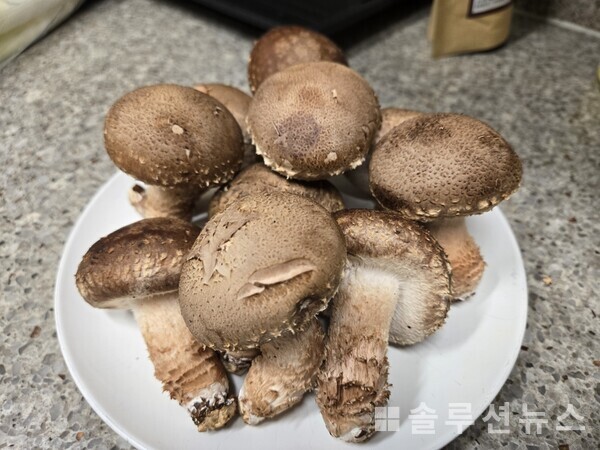There is a mushroom that exudes a subtle pine scent, with a yellowish cap and a firm stem. This is the Songhwa mushroom. It is gaining simultaneous attention from both farmers and consumers. It looks appealing, has a deep aroma, and most importantly, it offers a rich flavor when cooked.
The Songhwa mushroom is a new variety that combines the characteristics of both pine and shiitake mushrooms. True to its name, it has the scent of pine while maintaining a firm texture. It resembles shiitake mushrooms in appearance but is lighter in color and more aromatic. It is firmer than regular mushrooms, so it does not easily become mushy when stir-fried or grilled.

Recently, the Songhwa mushroom has been dubbed a ‘premium ingredient’ in the market. Despite prices exceeding 5,000 won per 100g at major Seoul supermarkets, it continues to sell steadily. Consumers enjoy its pleasant aroma on its own, roasted with butter, or paired with meat dishes. Some even brew it into tea.
To preserve the aroma of Songhwa mushrooms during cooking, temperature control is crucial. Cooking them slowly at medium or lower heat retains the aroma longer. It is best to cook them until the cap turns slightly brown. They pair well with butter, garlic, and soy sauce and enhance the flavor when grilled or stir-fried with meat, masking any meat odors.
Proper storage is also important. Since Songhwa mushrooms contain a lot of moisture, they quickly lose their freshness. If immediate consumption isn’t possible, wrapping them in paper and refrigerating them can keep them fresh for about three days. Using plastic bags causes them to wilt due to internal moisture. For long-term storage, slicing thinly and freezing or drying in a dehydrator is recommended. Dried Songhwa mushrooms can regain their aroma when rehydrated.
The biggest charm of Songhwa mushrooms, apart from their aroma, is their ‘texture.’ They are firmer than shiitake and chewier than oyster mushrooms. Their satisfying chew makes them a popular meat substitute. Among vegetarians, they are known as “mushrooms with a meat-like bite.” Even when simply grilled and paired with a dash of salt, they offer a delightful flavor.
Songhwa mushrooms are versatile on the dining table. Slicing them thinly into salads spreads their aroma, while they add umami to broths. They enhance the deep flavor of stews like gochujang jjigae or doenjang soup. They also complement butter dishes and pasta well. When sliced and placed on rice with a drizzle of soy sauce, they make a delicious bowl dish.
They are also nutritionally appealing, being rich in the unique proteins and dietary fibers of mushrooms and low in fat. The cap’s firmness reduces moisture loss, preserving nutrients post-cooking. They are particularly high in Vitamin D, which increases when sun-dried, making them popular in fall diets for immune support and fatigue recovery.
In the market, Songhwa mushrooms are seen as the ‘rising star’ on the dining table. As cultivation stabilizes, prices are gradually decreasing, and distribution is increasing. Some farms operate climate-controlled areas that allow for year-round production. Major retailers are also setting up dedicated Songhwa mushroom sections to boost sales.
They have garnered interest among chefs as well. A chef at a French restaurant commented, “Songhwa mushrooms are aromatic and low in moisture, ideal for making sauces.” Korean cuisine chefs praise them for balancing the richness of meat dishes and their harmonious blend with fermented bases like soybean paste or soy sauce.
Though still somewhat unfamiliar, Songhwa mushrooms are appearing more frequently on tables. Few mushrooms boast the combination of aroma, texture, and nutrition. As consumers begin to seek them out, both farmers and the market are quickening their steps.
At home, the simplest way to use Songhwa mushrooms is by grilling or stir-frying. In a pan with butter, a pinch of salt, and a splash of soy sauce, they make an excellent side dish. They can be served alongside meat dishes or atop rice to enhance the flavor. If you have any Songhwa mushrooms left in the fridge, try brewing them into tea. Their subtle aroma lingers in the mouth, offering a warm sensation.
Songhwa mushrooms are transitioning from a market novelty to a staple ingredient. They are fragrant, versatile in cooking methods, and full of nutrition. They truly embody a ‘healthy aroma’ in a mushroom. If you wish to experience the natural scent of mushrooms on your table, Songhwa mushrooms are an excellent choice.